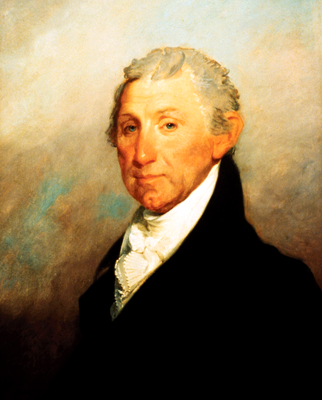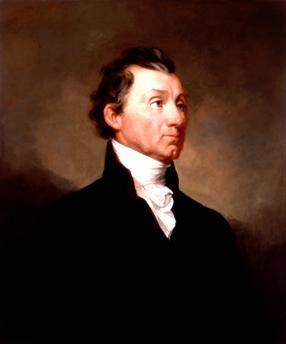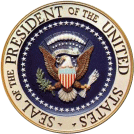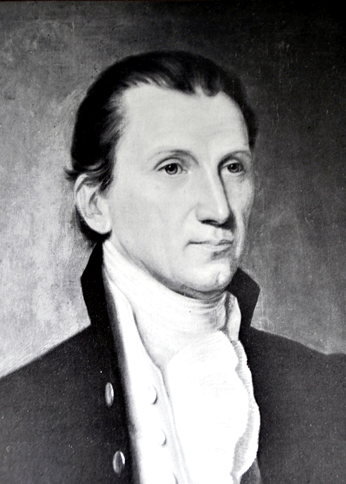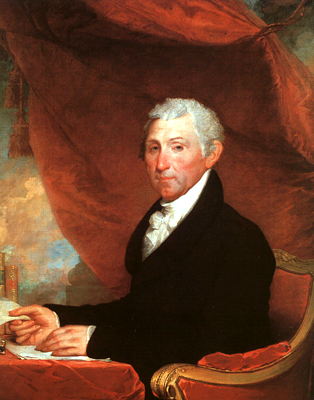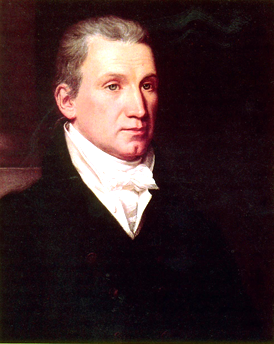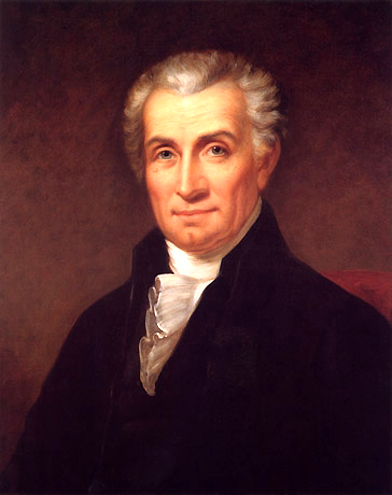|
JAMES MONROE |
|
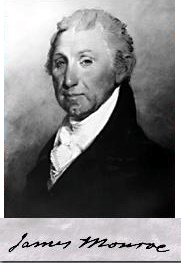
THE 5TH PRESIDENT OF
THE UNITED STATES OF AMERICA
(1817-1825)
MONROE, James
(1758–1831), fifth president of the U.S. (1817–25). One of the founders of the Jeffersonian Republican party, Monroe served as minister to France and to Great Britain and as secretary of state under President James Madison. He was co-negotiator of the Louisiana Purchase and author of the Monroe Doctrine.
Early Life.
Born in Westmoreland Co., Va., on April 28, 1758, the son of a modest planter, Monroe entered William and Mary College in July 1774, leaving in the spring of 1776 to serve in the 3d Virginia Regiment during the American Revolution. He fought in the battles of New York and distinguished himself in the vanguard action at Trenton, N.J., where he was wounded. At Valley Forge he held the rank of colonel as an aide to Gen. William Alexander. Returning to Virginia in 1780, he studied law with Thomas Jefferson, who became his lifelong friend, patron, and major intellectual influence. Monroe was elected to the Virginia House of Burgesses in 1782. As a delegate (1783–86) to the Continental Congress he organized opposition to the Jay-Gardoqui proposals (which would have blocked U.S. use of the Mississippi River) and framed the system of territorial government incorporated into the Northwest Ordinance. Although an advocate of a strong central government, he opposed ratification of the Constitution because he thought it gave too much power to the Senate.
In 1789 Monroe moved to a plantation in Albemarle Co., where he and Jefferson were neighbors. His wife, Elizabeth Kortright (c. 1763–1830) of New York, whom he had married in 1786, was one of the great beauties of the day. She was later known for the atmosphere of elegance and formality she brought to the White House.
Service Under Washington and Jefferson.
Elected to the U.S. Senate in 1790, Monroe joined Representative Madison and Secretary of State Jefferson in founding the Republican party to oppose the fiscal program of Secretary of the Treasury Alexander Hamilton. In order to please the Republicans, President George Washington appointed Monroe minister to France in 1794. His pro-French sympathies, however, which conflicted with the policy of the administration, led to his recall two years later. Monroe then defended himself in a pamphlet that attacked Washington’s foreign policy.
As governor of Virginia from 1799 to 1802, Monroe acted decisively to check a slave rebellion (Gabriel’s Rebellion) in 1802. In 1803 Jefferson, by then president, named him special envoy to France to assist Robert R. Livingston, the resident minister, in negotiating the purchase of Louisiana. From 1803 to 1807 Monroe was minister to Great Britain, and in 1806, aided by special envoy William Pinkney (1764–1822), he negotiated a treaty providing for limited relaxation of British wartime restrictions on U.S. trade with Europe. Jefferson, however, refused to accept a settlement that did not include a ban on British impressment of American seamen. This led to an estrangement between Monroe and his friends, President Jefferson and Secretary of State Madison, that was healed only in 1811, when Madison, who had succeeded Jefferson as president, appointed Monroe his secretary of state.
Widely respected by the younger generation of politicians for his practical sense and his ability to harmonize conflicting interests, Monroe established a good working relationship with Congress and won Republican support for administration policy as the U.S. became involved in the War of 1812. When the British captured Washington, D.C., in 1814, Monroe was made secretary of war in place of John Armstrong (1758–1843), who was blamed for the fiasco. A capable administrator, he restored morale and rushed reinforcements to help Gen. Andrew Jackson win the Battle of New Orleans.
Monroe as President.
In 1816 the Republican congressional caucus chose Monroe as its presidential nominee, and he won an overwhelming victory over his Federalist opponent, Rufus King. Adopting a conciliatory policy, he launched the Era of Good Feeling, hoping to terminate the party warfare he regarded as destructive of representative government.
Monroe drew into his cabinet three of the leading men of the day: John Quincy Adams as secretary of state, William H. Crawford as secretary of the treasury, and John C. Calhoun as secretary of war. His greatest achievements as president lay in foreign affairs. In 1819 he pressured Spain into ceding Florida and making a generous settlement of the Louisiana boundary. When Spain’s American colonies rebelled, a coalition of European powers threatened to intervene and restore Spanish authority. In 1822 the British foreign secretary George Canning proposed a joint declaration opposing European intervention. Monroe opted instead for an independent declaration of policy (later known as the Monroe Doctrine), which he embodied in his annual message to Congress in 1823. He announced that the U.S. would regard interference in American affairs as an unfriendly act and that the western hemisphere was closed to further European colonization. The latter statement, designed to check Russian expansion on the Pacific coast, was Adams’s contribution.
Monroe’s most important domestic achievement lay in constructing a chain of coastal fortifications to prevent future invasions. A drop in federal revenues after the financial panic of 1819 led Congress to curtail this program.
In 1820 the harmony of the Era of Good Feeling was ended by the crisis over slavery in Missouri and the bitter conflict over the presidential succession. Monroe welcomed the compromise that admitted Maine as a free state and excluded slavery in the Louisiana Territory north of 36° 30’. During his second term the intense rivalry over the presidential succession led to a decline in support for his administration, causing the failure of an Anglo-American accord to ban the international slave trade and also of Monroe’s efforts to protect Indian treaty rights.
Retirement.
After leaving the White House, Monroe lived at Oak Hill in Loudoun Co., Va. Heavily in debt, he was threatened by bankruptcy until Congress appropriated $30,000 to settle claims for expenses during his diplomatic missions. His last public act was to preside over the Virginia Constitutional Convention of 1829. He died July 4, 1831, at his daughter’s home in New York City. He was buried in New York, but reinterred in Richmond, Va., in 1858.
